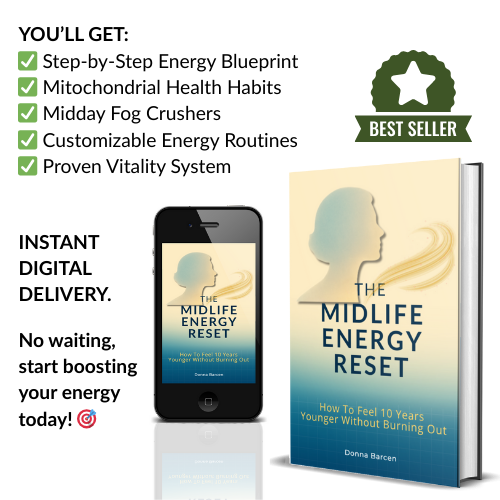Let’s be real: traditional meal planning sounds great in theory… until life actually happens.
You swear this is the week you’ll plan your meals, prep on Sunday, and glide through the week like a well-fed wellness goddess. But then Monday hits like a freight train—emails, meetings, deadlines, surprise Zoom calls—and suddenly you're ordering sushi at 9pm and promising to “start fresh” tomorrow.
If you’re someone whose schedule is more unpredictable than the algorithm, you’re not alone. Rigid meal plans can feel more like a trap than a tool. The good news? There’s a better way. Let’s talk about flexible meal planning because food should support your life, not stress you out.
Why Traditional Meal Plans Don’t Work for You
The Pinterest-style, color-coded, eat-this-exactly-at-12:37PM meal plans? Yeah, those weren’t built for entrepreneurs, freelancers, creatives, or humans who get thrown curveballs daily.
Traditional plans assume:
- You’ll have the same amount of time and energy each day (LOL)
- You’ll actually want to eat what you planned (even if your mood screams “comfort carbs”)
-
You won’t have an impromptu event, meeting, or meltdown
Meal plan guilt is real. But here’s a better mindset:
Your meal plan should bend, not break when life gets busy.

Shift to a More Flexible Mindset
Let’s ditch the “perfect plan” and try this instead:
1. Think in Meal Categories, Not Exact Recipes
You don’t need to know exactly what’s for dinner. Just decide the vibe.
- “Smoothie
- “Snack plate”
- “Nourish bowl”
-
“Wrap with whatever’s in the fridge”
This makes decision-making easier (and way more forgiving).
2. Plan Based on Energy, Not Time
Instead of forcing yourself to cook an elaborate meal on a night you’re dragging, organize your meals like this:
- Low-energy days: Greek yogurt + berries, avocado toast, soup from the freezer
- Medium-effort days: stir-fry, tacos, scrambled eggs with veggies
-
High-energy days: try that new recipe or do a little batch cooking
3. Stick to Your Core Ingredients
Pick 5–7 staple items that work across multiple meals. Think of them as your kitchen MVPs.
Example:
- Cooked quinoa
- Roasted sweet potatoes
- Rotisserie chicken
- Leafy greens
- Eggs
- Hummus
-
Pre-chopped veggies
Suddenly, you’ve got the foundation for wraps, bowls, salads, and snack plates without the stress.
Build Your Personal Meal Planning Framework
This isn’t about rigid structure, it’s about repeatable ease.
Step 1: Choose 3 Go-To Meal Templates
Pick a few “default” meals that fit your style. Here’s what Liza, a busy wellness entrepreneur, uses:
- Breakfast: Overnight oats, smoothie bowls, or egg muffins
- Lunch: Salad with prepped protein, nourish bowl, or wrap
-
Dinner: Sheet pan veggies + protein, stir-fry, or soup with sourdough
Templates reduce the what-should-I-eat drama.
Step 2: Try a 10-Minute Weekly Ritual
You don’t need a Sunday meal-prep marathon. Just do this:
- Look at your week—where are the chaos pockets?
- Pick 2–3 flexible meals to prep
- Write a quick grocery list (or order online)
-
Block one hour to prep a few basics
Boom. Future you says thanks.
Step 3: Prep Ingredients, Not Entire Meals
You don’t have to prep full recipes. Just get ahead where it counts.
Prep ideas:
- Chop veggies
- Cook one grain + one protein
- Make a big batch of sauce or dressing (hello, tahini goddess dressing)
-
Hard-boil a few eggs
Now you’ve got building blocks ready for whatever your schedule throws at you.
Your “Plan B” List = Sanity Saver
Let’s be honest: even the best plans fall apart. That’s why you need a “Plan B” list—your no-fail, 10-minute meals that are always there when life gets nuts.
Ideas:
- Peanut butter toast + banana + protein shake
- Tuna + crackers + cut-up veggies
- Leftovers + an egg on top (seriously, it works)
-
Grocery store rotisserie chicken + pre-mixed salad
And don’t underestimate the power of a well-stocked freezer and pantry (frozen edamame, anyone?).
Real-Life Example: Liza’s Flexible Meal Plan in Action
Meet Liza. She’s 35, runs an online wellness brand, and travels often. She used to live on protein bars and Uber Eats. Now?
- She rotates 3 meal templates per week
- Preps ingredients on Sunday evenings
- Keeps snacks in her work bag and car
-
Chooses what to eat based on how her day feels (not what a planner says)
The result? She’s eating better, feeling more energized, and spending way less time overthinking food.

You Don’t Need a Perfect Plan. You Need a Flexible One
The truth? Flexibility is the key to consistency. When your meal plan can bend with your schedule, you’re more likely to follow through and feel good about it.
So this week, forget perfection. Start small. Maybe you just prep a grain and a protein. Or write down 3 easy meal ideas. Or finally stock your fridge with real food.
Whatever your version of “flexible” looks like—you’ve got this. ✨
Bonus Freebies to Make It Easier:
1. Download the Free Flexible Meal Plan Template
Includes:
- Weekly meal grid
- Core ingredient prep list
-
“Plan B” meal ideas
🎁 2. Feeling Stressed and Scattered? Grab Your Free Copy of
👉 A Smarter Way to Beat Stress
This free eBook is your go-to guide to feeling more energized, less overwhelmed, and better equipped to take care of yourself—even with a packed calendar.




